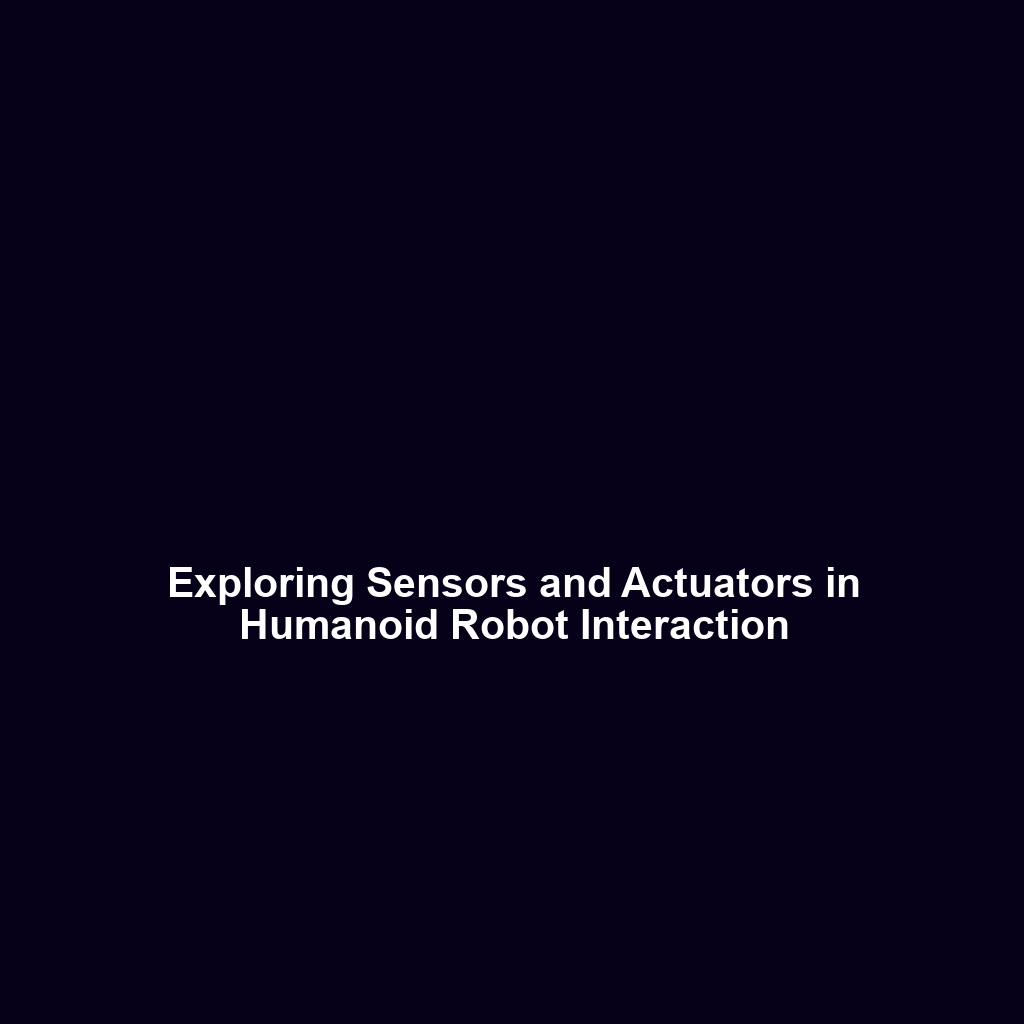Sensors and Actuators: The Hardware Enabling Human-Like Interaction in Humanoid Robots
Introduction
In the realm of humanoid robots, the importance of sensors and actuators cannot be overstated. These critical hardware components empower robots to perceive their surroundings and interact in a manner that mimics human responses. As the demand for humanoid robots grows across various sectors, understanding the significance of sensors and actuators is essential. They serve as the foundation upon which human-like interaction is built, facilitating advancements that enhance the functionality and acceptance of humanoid robots in everyday life.
Key Concepts
Sensors: Perception Mechanisms
Sensors are devices that detect physical phenomena such as light, sound, temperature, and motion. In humanoid robots, these sensors play a vital role in providing feedback about the environment, which is critical for functioning effectively in real-world settings. Common types of sensors include:
- Proximity sensors
- Vision sensors (cameras)
- Force sensors
Actuators: Movement Mechanisms
Actuators are the components that enable robots to move and perform tasks. They translate the signals from sensors into physical actions. Types of actuators commonly used in humanoid robots include:
- Electric motors
- Pneumatic systems
- Hydraulic actuators
The interplay between sensors and actuators forms the backbone of human-like interaction, allowing humanoid robots to engage with their environment and users adeptly.
Applications and Real-World Uses
The integration of sensors and actuators into humanoid robots has led to numerous practical applications. For instance, in healthcare, humanoid robots equipped with advanced sensors can assist with patient monitoring and even provide companionship. Additionally, in education, these robots can serve as interactive tools that enhance learning experiences. Here are some notable applications:
- Robotics in elder care, offering assistance to the elderly through conversational interactions.
- Service robots in hospitality for customer engagement and assistance.
- Research robots in laboratories performing autonomous tasks.
Current Challenges
Despite advancements, the field of humanoid robotics faces several challenges concerning sensors and actuators. Key issues include:
- Integration complexity: Ensuring seamless coordination between sensors and actuators can be tech-heavy.
- Cost: High-quality sensors and actuators can drive up the expense of robotics projects.
- Durability: Many sensors and actuators may not withstand rough operational environments.
Addressing these challenges is crucial for the continued development and deployment of humanoid robots in various sectors.
Future Research and Innovations
Cutting-edge research is underway to develop next-generation sensors and actuators that will enhance the capabilities of humanoid robots. Innovations such as soft robotics and advanced artificial intelligence integration promise to revolutionize how these robots interact with humans. Future research might focus on:
- Developing miniaturized sensors for better responsiveness.
- Innovating new actuation methods that allow for smoother and more precise movements.
- Integrating AI to improve decision-making processes in robots.
Conclusion
In summary, sensors and actuators are foundational elements that enable human-like interaction in humanoid robots. As research continues to blossom, the potential for creating more sophisticated and engaging robots is vast. For further reading on humanoid robotics, check out our articles on robotic applications in healthcare and the future of AI in robotics to dive deeper into this fascinating field.
